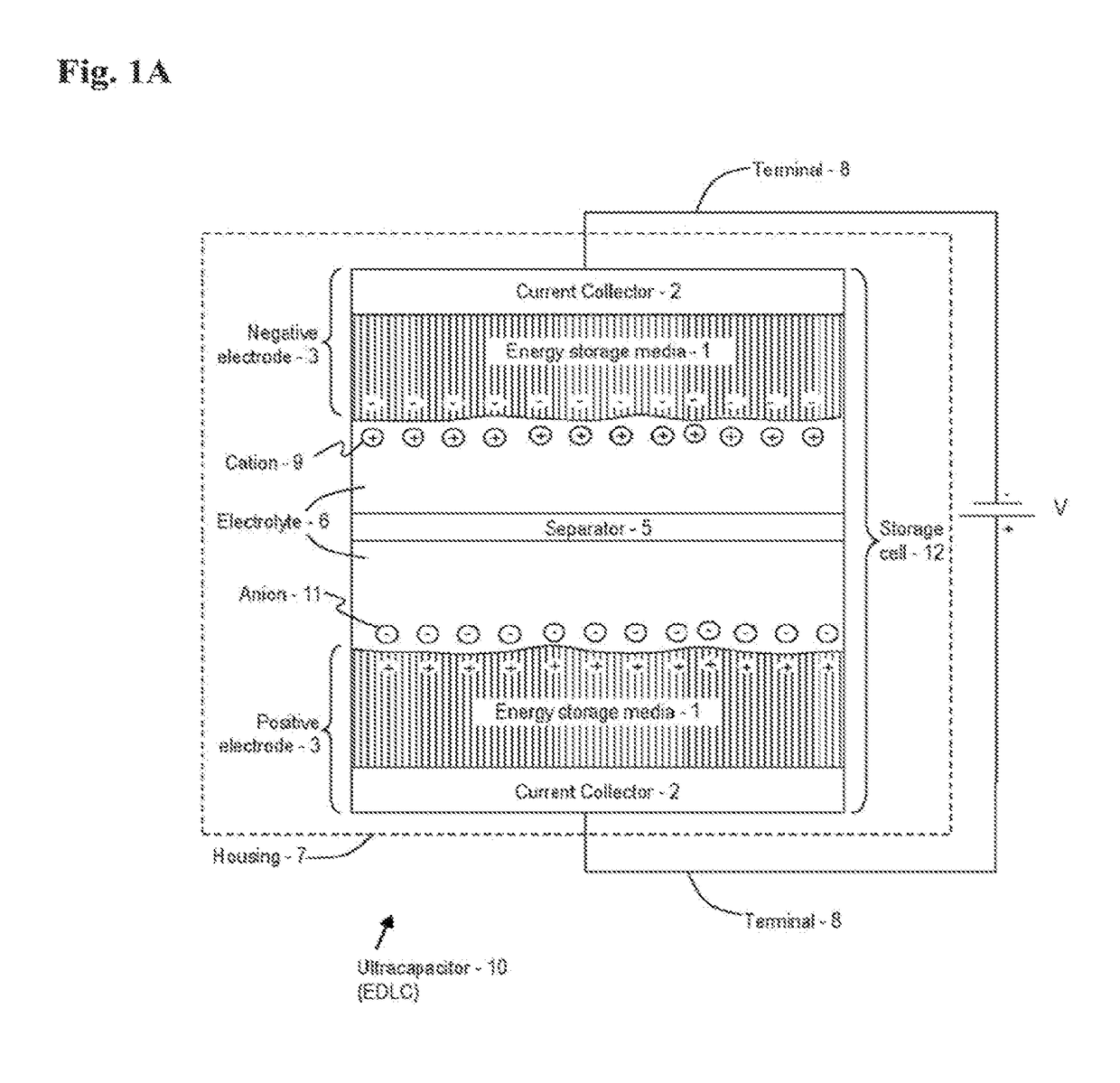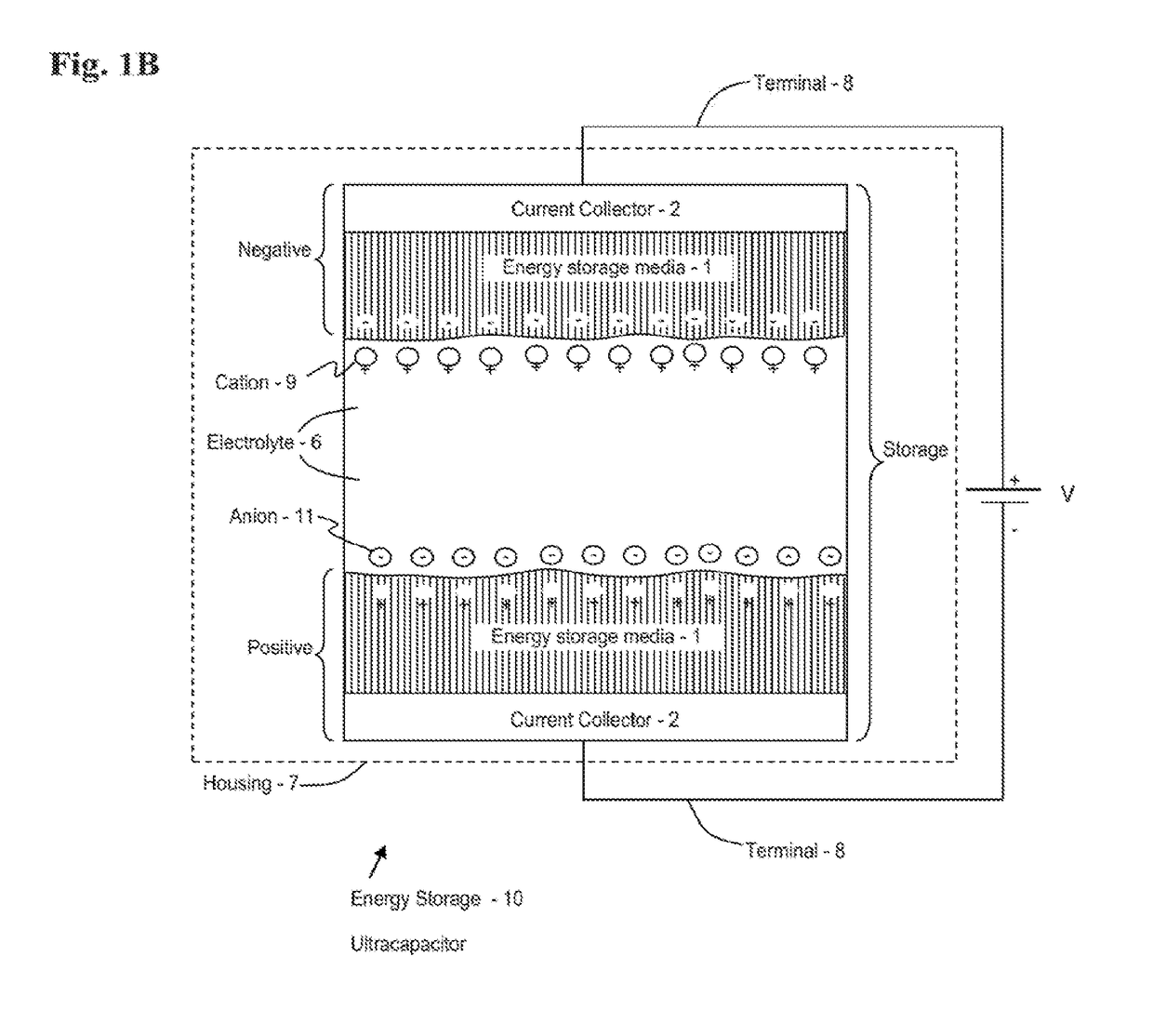Advanced electrolytes for high temerature energy storage device
- Summary
- Abstract
- Description
- Claims
- Application Information
AI Technical Summary
Benefits of technology
Problems solved by technology
Method used
Image
Examples
first embodiment
[0253]With regard to anions 11 suited for use in an ionic liquid that provides the electrolyte 6, various organic anions 11 may be used. Exemplary anions 11 and structures thereof are provided in Table 3. In a first embodiment, (No. 1), exemplary anions 11 are formulated from the list of substitute groups (a) provided above, or their equivalent. In additional embodiments, (Nos. 2-5), exemplary anions 11 are formulated from a respective base structure (Y2, Y3, Y4, . . . Yn) and a respective number of anion substitute groups (α1, α2, α3, . . . αn), where the respective number of anion substitute groups (α) may be selected from the list of substitute (α) groups provided above, or their equivalent. Note that in some embodiments, a plurality of anion substitute groups (α) (i.e., at least one differing anion substitute group (α)) may be used in any one embodiment of the anion 11. Also, note that in some embodiments, the base structure (Y) is a single atom or a designated molecule (as desc...
second embodiment
[0392]Specific examples of glass-to-metal seals that have been used in the ultracapacitor 10 include two different types of glass-to-metal seals. A first one is from SCHOTT with a US location in Elmsford, N.Y. This embodiment uses a stainless steel pin, glass insulator, and a stainless steel body. A second glass-to-metal seal is from HERMETIC SEAL TECHNOLOGY of Cincinnati, Ohio. This second embodiment uses a tantalum pin, glass insulator and a stainless steel body. Varying sizes of the various embodiments may be provided.
[0393]An additional embodiment of the glass-to-metal seal includes an embodiment that uses an aluminum seal and an aluminum body. Yet another embodiment of the glass-to-metal seal includes an aluminum seal using epoxy or other insulating materials (such as ceramics or silicon).
[0394]A number of aspects of the glass-to-metal seal may be configured as desired. For example, dimensions of housing and pin, and the material of the pin and housing may be modified as approp...
PUM
 Login to View More
Login to View More Abstract
Description
Claims
Application Information
 Login to View More
Login to View More - R&D
- Intellectual Property
- Life Sciences
- Materials
- Tech Scout
- Unparalleled Data Quality
- Higher Quality Content
- 60% Fewer Hallucinations
Browse by: Latest US Patents, China's latest patents, Technical Efficacy Thesaurus, Application Domain, Technology Topic, Popular Technical Reports.
© 2025 PatSnap. All rights reserved.Legal|Privacy policy|Modern Slavery Act Transparency Statement|Sitemap|About US| Contact US: help@patsnap.com



